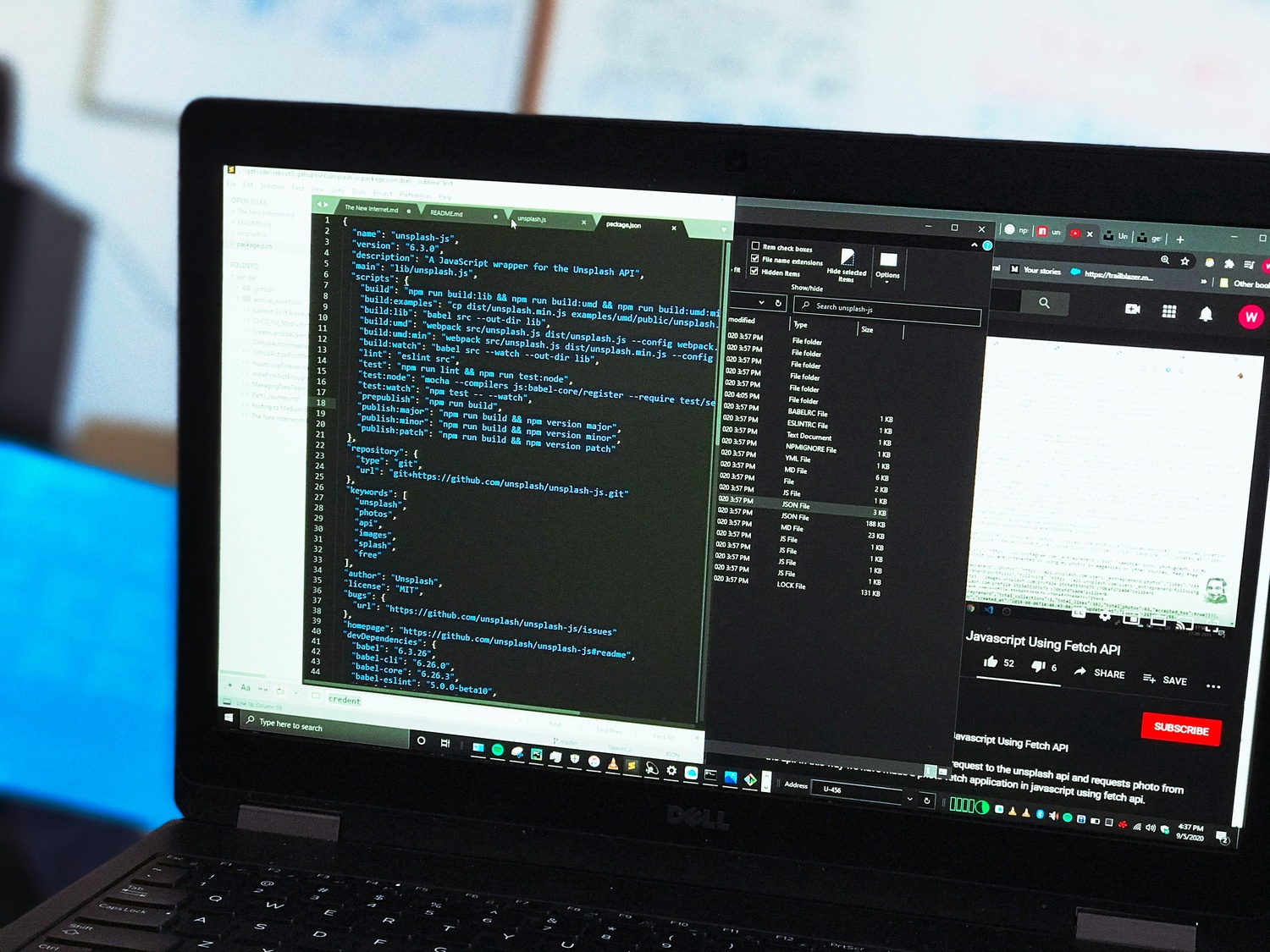Splunk is powerful, no question about it. But as teams scale, so do the bills, the dashboards, and the maintenance that comes with it. Many engineers find themselves spending more time managing the tool than learning from the data. If that sounds familiar, you’re not alone. Luckily, there are solid alternatives that offer easier setups, clearer pricing, and fewer moving parts, without giving up on deep insights or performance. In this guide, we’ll look at the best options worth considering when Splunk starts feeling like overkill.

1. AppFirst
AppFirst fits naturally among Splunk alternatives for teams that want observability and infrastructure management without the extra complexity. Instead of juggling multiple tools for logging, monitoring, and deployment, developers can define what their application needs: CPU, database, networking, Docker image, and AppFirst automatically provisions the infrastructure across AWS, Azure, or GCP. Everything is secure, compliant, and ready to go, with no Terraform files or YAML setups in sight.
It’s built with developers in mind, offering built-in logging, monitoring, and alerting that replace the need for separate observability stacks like Splunk. The platform also provides centralized auditing, cost visibility by app or environment, and flexible deployment options (SaaS or self-hosted). For teams tired of cloud setup overhead but still needing enterprise-level reliability, AppFirst streamlines everything into one simple, developer-first experience.
נקודות עיקריות:
- Unified platform that replaces traditional Splunk-style monitoring stacks
- Automatic, secure infrastructure provisioning across major clouds
- Built-in logging, monitoring, and alerting
- Cost visibility and auditing by app or environment
- Works with AWS, Azure, and GCP
- SaaS or self-hosted deployment options
Good Choice For:
- Teams looking for Splunk alternatives with lower complexity
- Developers who want observability and infrastructure handled automatically
- Companies standardizing cloud environments without internal tooling
- Fast-moving teams shipping products without a dedicated DevOps team
Contacts:
- אֲתַר אִינטֶרנֶט: www.appfirst.dev

2. Better Stack
Better Stack takes a pretty modern approach to log management. Instead of forcing engineers to deal with complex setups, it hooks right into Kubernetes or Docker environments using eBPF collectors. That means teams can grab logs, metrics, and network traces without writing a single line of extra code. Everything’s stored in clean, structured JSON, so it’s easy to search, filter, or build dashboards without messing around with SQL. It also includes alerting, anomaly detection, and incident management, which makes it a one-stop place to keep tabs on your systems.
What’s nice is that Better Stack sticks to open standards and doesn’t box you in. You can query data over HTTP like a warehouse, even store it in your own S3 bucket if you want. It’s built for teams that want flexibility, speed, and a clear view of costs. The setup feels less like a “tool” and more like an environment that just makes debugging smoother and less painful.
נקודות עיקריות:
- OpenTelemetry-native setup with eBPF data collection
- Structured JSON logs for easier searches and filtering
- Optional self-hosting or S3 data storage
- AI-assisted root cause suggestions that stay under your control
- Integrated incident management and on-call scheduling
Good Choice For:
- Teams already using open observability tools
- Developers working in containerized environments
- Companies that want transparency and control over costs
- Groups looking for a single place to monitor, alert, and respond
Contacts:
- Website: betterstack.com
- Phone: +1 (628) 900-3830
- Email: hello@betterstack.com
- LinkedIn: www.linkedin.com/company/betterstack
- Instagram: www.instagram.com/betterstackhq
- Twitter/X: x.com/betterstackhq
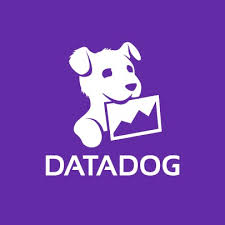
3. דאטאדוג
Datadog is basically the all-in-one observability hub that many teams end up using at scale. It keeps tabs on everything, your infrastructure, apps, network traffic, security, and more, then pulls it all together in one dashboard. You can see what’s happening across servers, containers, and cloud services without jumping between tools. The platform makes it easier to spot issues early and connect the dots between performance, cost, and reliability.
Of course, Datadog can get heavy for smaller setups, but for large or distributed teams, it’s still one of the more complete monitoring ecosystems out there. They’ve added AI-powered features that help teams move faster instead of just showing more data. It ties directly into things like Slack, PagerDuty, and ServiceNow, which helps keep alerts and workflows connected instead of scattered across apps.
נקודות עיקריות:
- Unified monitoring for logs, metrics, traces, and security data
- Works across cloud, serverless, and Kubernetes setups
- AI-assisted insights and anomaly detection
- Built-in automation and incident response tools
- Covers compliance, vulnerability, and security posture tracking
Good Choice For:
- Large or fast-scaling engineering teams
- Companies running hybrid or multi-cloud systems
- Teams that want everything in one place
- Organizations looking to automate observability workflows
Contacts:
- אתר אינטרנט: www.datadoghq.com
- App Store: apps.apple.com/app/datadog/id1391380318
- Google Play: play.google.com/store/apps/details?id=com.datadog.app
- טלפון: 866 329-4466
- Email: info@datadoghq.com
- Address: 620 8th Ave 45th Floor New York, NY 10018 USA
- לינקדאין: www.linkedin.com/company/datadog
- אינסטגרם: www.instagram.com/datadoghq
- Twitter/X: x.com/datadoghq
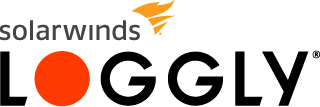
4. Loggly
Loggly, part of SolarWinds, keeps things simple when it comes to managing logs. It pulls data from pretty much anywhere: servers, applications, or cloud services, and shows it all in one web dashboard. You don’t need special agents or complicated setup, and searching through huge log volumes is quick and straightforward. It’s built for teams that just want to troubleshoot, visualize, and get back to work without dealing with a full-blown monitoring suite.
It integrates nicely with popular DevOps tools and even brings in application monitoring, so you can see how everything ties together. The platform is lightweight but still does the job for most mid-sized teams. If Splunk feels too heavy or too pricey, Loggly often ends up being a cleaner, easier alternative that still covers the essentials.
נקודות עיקריות:
- Centralized log collection from all major systems
- Quick search and filtering for large log sets
- Easy-to-read dashboards and performance charts
- Connects with DevOps and monitoring tools
- 100% browser-based, no agent installation required
Good Choice For:
- Teams that need straightforward log management
- Mid-sized companies replacing heavier platforms
- Developers running multiple apps or services
- Organizations already using SolarWinds products
Contacts:
- Website: www.loggly.com
- LinkedIn: www.linkedin.com/company/loggly
- Twitter/X: x.com/loggly
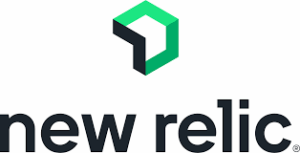
5. New Relic
New Relic takes the idea of full-stack observability and turns it into one connected platform. It gives teams visibility across infrastructure, applications, cloud services, and even digital experiences, all in one place. Instead of juggling multiple tools, engineers can trace performance issues from backend systems to front-end apps in real time. The platform brings together everything from APM and Kubernetes monitoring to logs, traces, and network data, making it easier to spot patterns and fix issues before they escalate.
What also stands out is how New Relic approaches pricing and accessibility. Teams only pay for what they actually use, not for user seats or tool bundles, which makes it easier to predict costs. With hundreds of integrations and built-in AI assistance, it’s designed to fit into almost any tech stack. For teams looking to break down silos between developers, ops, and product, New Relic gives them a shared view of performance and reliability across the entire system.
נקודות עיקריות:
- Unified observability for infrastructure, apps, logs, and traces
- Real-time monitoring and analytics in one interface
- Transparent usage-based pricing model
- AI-powered insights and anomaly detection
- Supports OpenTelemetry data and custom dashboards
Good Choice For:
- Engineering teams managing complex or multi-cloud environments
- Organizations wanting predictable, usage-based costs
- Developers looking for a single observability platform
- Teams trying to unify monitoring across applications and infrastructure
Contacts:
- אתר אינטרנט: newrelic.com
- Phone: (415) 660-9701
- Address: Atlanta 1100 Peachtree Street NE, Suite 2000, Atlanta, GA 30309, USA
- לינקדאין: www.linkedin.com/company/new-relic-inc-
- פייסבוק: www.facebook.com/NewRelic
- אינסטגרם: www.instagram.com/newrelic
- Twitter/X: x.com/newrelic

6. Sumo Logic
Sumo Logic blends log analytics, cloud SIEM, and AI-driven monitoring into a single system built for fast detection and response. It’s designed for teams that deal with large, noisy environments where speed and automation really matter. The platform uses agentic AI to triage alerts, detect anomalies, and connect security signals across the stack, cutting down the time it takes to investigate incidents. Beyond security, it also helps teams monitor application reliability and infrastructure performance using the same set of logs and metrics.
Sumo Logic supports hundreds of integrations and has built-in compliance with major frameworks like SOC 2, HIPAA, and FedRAMP. Its flexible licensing and AI features make it appealing for organizations that want to modernize SecOps without piecing together different tools. In short, it helps teams turn a flood of data into something actionable and manageable.
נקודות עיקריות:
- Combined log management, monitoring, and cloud SIEM platform
- AI-driven analysis and automated alert triage
- Wide integration ecosystem for cloud and enterprise systems
- Secure and compliant with multiple industry standards
- Flex licensing and scalable data ingestion
Good Choice For:
- Security and DevOps teams managing large cloud setups
- Enterprises focused on modern, automated SecOps
- Organizations needing AI-powered investigation and response
- Teams replacing separate tools with a unified observability solution
Contacts:
- אתר אינטרנט: www.sumologic.com
- טלפון: 1-650-810-8700+
- Email: sales@sumologic.com
- Address: 855 Main St., Suite 100 Redwood City, CA 94063
- לינקדאין: www.linkedin.com/company/sumo-logic
- פייסבוק: www.facebook.com/Sumo.Logic
- Twitter/X: x.com/SumoLogic

7. SigNoz
SigNoz is an open-source alternative to tools like Datadog or New Relic, offering logs, metrics, and traces in one place. It’s built around OpenTelemetry, so teams can collect data without getting locked into any single vendor. With SigNoz, developers can track performance, monitor infrastructure, and debug applications using correlated telemetry signals – all inside a clean, self-hosted or cloud-hosted interface. It supports flexible querying with PromQL and ClickHouse and comes with dashboards, alerts, and exceptions out of the box.
What many teams like about SigNoz is how flexible it is. You can self-host it for full data control or use its managed cloud service if you prefer something hands-off. The pricing is straightforward: pay for the data you send, no user or host limits. For developers who want open standards, transparent costs, and the ability to customize everything, SigNoz hits a sweet spot between power and simplicity.
נקודות עיקריות:
- Unified platform for logs, metrics, traces, and alerts
- Self-hosted or managed deployment options
- Transparent, usage-based pricing
- ClickHouse database for high-speed queries
- Strong support for correlated telemetry data
Good Choice For:
- Teams wanting an open-source, vendor-neutral solution
- Developers working with OpenTelemetry
- Organizations prioritizing data control and flexibility
- Engineering teams tired of user-based or host-based pricing
Contacts:
- Website: signoz.io
- Email: support@signoz.io
- LinkedIn: www.linkedin.com/company/signozio
- Twitter/X: x.com/SigNozHQ

8. Dynatrace
Dynatrace takes a very data-first approach to observability. It pulls in everything—from application and infrastructure data to logs, traces, and even user experience metrics—and connects it all so teams can actually understand what’s happening in real time. The platform’s Davis AI engine does a lot of the heavy lifting, automatically finding issues, pointing out the root cause, and even triggering actions before something breaks. It’s designed for modern systems that are growing fast and rely on automation to keep things running smoothly.
One thing that makes Dynatrace stand out is how it puts context around all your data. Its Grail data lakehouse ties everything together, giving you answers instead of just dashboards full of noise. The setup helps teams go from “something’s wrong” to “here’s what caused it” a lot faster. Pricing is based on actual usage, which keeps things flexible as your environment grows or changes.
נקודות עיקריות:
- AI-powered root cause detection and automation with Davis AI
- Full observability across apps, infrastructure, and security layers
- Works with OpenTelemetry, cloud, and hybrid setups
- Automated workflows through the Dynatrace Automation Engine
- Usage-based pricing that scales with your environment
Good Choice For:
- Enterprises managing complex, cloud-heavy systems
- Teams that want automation built into their monitoring
- Organizations experimenting with generative AI or LLMs
- Companies that need one platform for everything observability-related
Contacts:
- אתר אינטרנט: www.dynatrace.com
- Phone: 1-844-900-3962
- Email: dynatraceone@dynatrace.com
- Address: 401 Castro Street, Second Floor Mountain View, CA, 94041 United States of America
- לינקדאין: www.linkedin.com/company/dynatrace
- פייסבוק: www.facebook.com/Dynatrace
- אינסטגרם: www.instagram.com/dynatrace
- Twitter/X: x.com/Dynatrace

9. Elastic Logstash
Logstash is one of those classic open-source tools that just quietly does its job really well. It’s basically a data pipeline – you feed in logs or metrics from different places, it cleans and transforms the data, and then ships it off wherever you want, usually Elasticsearch. The cool part is how customizable it is. You can use it to parse messy log files, mask sensitive data, or standardize formats so they’re actually useful for analysis.
Because it’s open-source, Logstash can be molded to fit almost any setup. There are hundreds of plugins that handle inputs, filters, and outputs, so teams can build pipelines that match their exact needs. It’s reliable too, features like persistent queues make sure no data gets lost even if something crashes. For anyone looking to build their own observability stack or move away from Splunk, Logstash gives you full control without the vendor lock-in.
נקודות עיקריות:
- Open-source data pipeline for ingesting and transforming logs
- Plays nicely with Elasticsearch and other destinations
- Durable design with persistent queues and dead letter queues
- Centralized pipeline management and monitoring options
- Easy to extend with custom plugins
Good Choice For:
- Developers running self-managed monitoring stacks
- Teams shifting from Splunk to the Elastic ecosystem
- Companies that need full control over their log pipelines
- Organizations looking for flexible, open-source tools
Contacts:
- אתר אינטרנט: www.elastic.co
- טלפון: + 1 202 759 9647
- Email: info@elastic.co
- כתובת: רחוב קירני 88 קומה 19 סן פרנסיסקו, קליפורניה 94108
- לינקדאין: www.linkedin.com/company/elastic-co
- פייסבוק: www.facebook.com/elastic.co
- Twitter/X: x.com/elastic

10. Fluentd
Fluentd is another open-source favorite, but it takes a slightly different approach, it acts as the go-between for all your data sources and storage systems. Think of it as a universal translator for logs. It collects data from pretty much anywhere, unifies it, and sends it where it needs to go. The best part is how flexible it is. With over 500 plugins, you can make it work with almost any setup without adding much overhead.
It’s lightweight, reliable, and used by thousands of companies, from startups to massive enterprises. Fluentd is especially common in cloud-native environments since it integrates nicely with Kubernetes and similar platforms. It’s simple at its core but powerful in what it can handle, which is why so many teams use it to keep their logging infrastructure clean and consistent.
נקודות עיקריות:
- Open-source, CNCF-backed log collector and router
- Decouples data collection from storage and analytics
- Scales easily across thousands of servers
- Backed by a huge community and strong documentation
Good Choice For:
- Teams centralizing logs across different systems
- Kubernetes and cloud-native environments
- Developers who want a simple but flexible logging tool
- Companies that prefer open-source, vendor-neutral options
Contacts:
- Website: www.fluentd.org
- Facebook: www.facebook.com/pages/Fluentd
- Twitter/X: x.com/fluentd
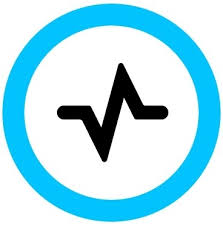
11. Graylog
Graylog often comes up as a solid Splunk alternative for teams that need to handle security and log management without making things overly complicated. It’s built for people who want more control over their data flow, whether that means running it in the cloud, on-premises, or across both. The platform lets teams centralize and analyze logs, detect threats, and automate investigations while keeping costs predictable. Its built-in AI tools help reduce alert noise and surface useful insights faster, making day-to-day monitoring a little less overwhelming.
What’s nice about Graylog is how it balances flexibility with simplicity. You can route logs however you want, manage storage efficiently, and preview archived data without paying extra to reindex it. There’s also a focus on transparency: no hidden license fees, no rigid pricing, and no vendor lock-in. For teams that want a leaner, more hands-on observability setup, Graylog fits right in.
נקודות עיקריות:
- AI-powered security and log management
- Works across cloud, hybrid, or on-prem environments
- Built-in pipeline management for flexible data routing
- Transparent pricing and no vendor lock-in
- Supports wide integration options through open standards
Good Choice For:
- Security and operations teams that need clarity and control
- Organizations looking for cost-efficient observability tools
- Teams that prefer a customizable, self-managed setup
Contacts:
- אתר אינטרנט: graylog.org
- Email: info@graylog.com
- Address: 1301 Fannin St, Ste. 2000 Houston, TX 77002
- לינקדאין: www.linkedin.com/company/graylog
- פייסבוק: www.facebook.com/graylog
- Twitter/X: x.com/graylog2
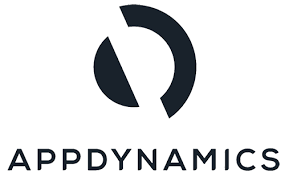
12. Cisco AppDynamics
AppDynamics, part of Cisco, is another strong option for those exploring Splunk alternatives, particularly for teams focused on application performance. It helps monitor how apps behave in real time, providing visibility across multi-cloud and on-prem environments. The platform ties technical performance data to business outcomes, helping teams spot and fix problems before users even notice. AppDynamics also supports automation with machine learning to identify root causes and streamline issue resolution.
Its flexibility stands out, teams can monitor everything from web apps to large enterprise systems without adding much overhead. You get end-to-end service visibility, role-based security, and the ability to connect performance metrics with business KPIs. In short, it’s a monitoring tool designed to give both developers and operations teams a clearer view of what’s happening across their environment.
נקודות עיקריות:
- Real-time application performance monitoring
- End-to-end visibility across multi-cloud setups
- Machine learning for automated root-cause analysis
- Secure architecture with granular access control
- Correlates technical data with business metrics
Good Choice For:
- Companies needing deep application performance insights
- Enterprises managing large or hybrid infrastructures
- Teams focused on connecting performance to user experience
Contacts:
- אתר אינטרנט: www.cisco.com
- Phone: 1800 134349
- Email: anz_contactsales@cisco.com
- לינקדאין: www.linkedin.com/company/cisco
- Facebook: www.facebook.com/CiscoAustraliaNewZealand
- Twitter/X: x.com/CiscoANZ
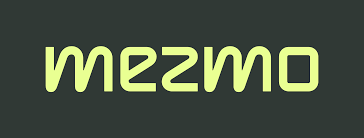
13. Mezmo
Mezmo takes a more modern approach to observability and telemetry. It’s built around the idea of “Active Telemetry,” where data is processed as it moves, rather than stored first and analyzed later. This makes it easier for teams to reduce noise, optimize data volume, and get faster root-cause insights. Mezmo can unify logs, metrics, and traces into one structured view, giving both humans and AI systems the context they need to understand what’s happening in real time.
It’s flexible enough to work for developers, SREs, and even AI agents. Features like in-flow processing, dynamic sampling, and context-based routing help teams cut through redundant data and focus on what actually matters. Whether you’re trying to lower costs or speed up troubleshooting, Mezmo offers a straightforward, AI-ready way to get better visibility into system behavior.
נקודות עיקריות:
- Active Telemetry for in-motion data processing
- Combines logs, metrics, and traces into unified context
- AI-driven root-cause analysis and anomaly detection
- Tools for cost control and efficient data routing
- Flexible deployment with quick setup and integration
Good Choice For:
- Teams looking for real-time, AI-ready observability
- Developers and SREs managing complex distributed systems
- Organizations that want to reduce telemetry costs without losing visibility
Contacts:
- Website: www.mezmo.com
- Email: outreach@mezmo.com
- LinkedIn: www.linkedin.com/company/mezmo
- Twitter/X: x.com/mezmodata

14. ManageEngine
ManageEngine, part of Zoho Corporation, takes a practical approach to IT management and observability. It’s one of those platforms that tries to cover everything under one roof: logs, endpoints, networks, service desks, and compliance, so teams don’t have to juggle a dozen separate tools. The idea is to make managing complex enterprise infrastructure a little less painful while keeping things secure and compliant. It’s also privacy-conscious; ManageEngine runs its own systems instead of using third-party trackers, which is becoming a rare stance these days.
You can roll out its tools across on-prem, hybrid, or cloud setups, and they tend to work well together. Whether a company needs to analyze logs, keep endpoints patched, or monitor uptime, ManageEngine’s ecosystem ties those tasks into one workflow. It’s designed for organizations that want broad visibility without getting locked into a rigid system.
נקודות עיקריות:
- Covers monitoring, security, analytics, and IT service management
- Centralized log and infrastructure visibility
- Built-in compliance tools like ISO 27001 frameworks
- Data privacy focus with no third-party tracking
- Deployable across on-prem and cloud setups
Good Choice For:
- Enterprises that want an all-in-one IT management suite
- Teams focused on compliance and data privacy
- Organizations that prefer flexibility over vendor lock-in
Contacts:
- אתר אינטרנט: www.manageengine.com
- טלפון: 1 408 916 9696+
- Email: tech-expert@manageengine.com
- Address: 4141 Hacienda Drive, Pleasanton CA 94588 USA
- לינקדאין: www.linkedin.com/company/manageengine
- פייסבוק: www.facebook.com/ManageEngine
- אינסטגרם: www.instagram.com/manageengine
- Twitter/X: x.com/manageengine
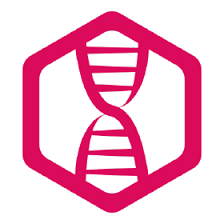
15. LogDNA (IBM Observability by LogDNA)
LogDNA, now part of IBM’s observability stack, was built to solve the headache of managing logs in fast-moving cloud-native environments. It automates a lot of the heavy lifting: collecting, parsing, and analyzing logs from hybrid or Kubernetes-based setups,so DevOps teams can focus on fixing issues rather than searching through endless files. The platform scales easily, thanks to its foundation in IBM Cloud’s global infrastructure, and gives users consistent performance no matter where their workloads live.
What makes LogDNA stand out is its developer-first mindset. It’s not trying to reinvent observability but to make logging simpler and smarter. Automatic log recognition, structured formatting, and global deployment support make it easy to keep visibility intact as teams expand. It’s a tool for people who want real-time insight without building an entire observability framework from scratch.
נקודות עיקריות:
- Streamlined log collection and analysis for hybrid and cloud systems
- Kubernetes-based architecture for scalability
- Real-time data insights and DevOps automation
- Deep integration with IBM Cloud services
- Automatic parsing and structured log formatting
Good Choice For:
- DevOps and SRE teams running large distributed systems
- Enterprises using IBM Cloud or Kubernetes
- Teams that need automated, scalable log management
Contacts:
- אתר אינטרנט: www.ibm.com
- לינקדאין: www.linkedin.com/company/ibm
- אינסטגרם: www.instagram.com/ibm
- Twitter/X: x.com/ibm
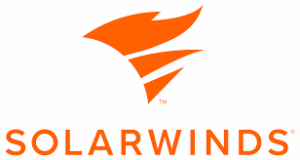
16. SolarWinds
SolarWinds has been around for a while, and it’s kept its focus on making IT monitoring practical and accessible. Its platform brings together observability, incident response, and IT service management in one place, giving teams a clear picture of how their systems are performing. The newer version of SolarWinds also includes AI-assisted insights, helping teams spot problems faster and understand what’s really happening behind the dashboards.
It’s flexible enough for both small setups and global infrastructures, which is part of why so many organizations stick with it. The “Secure by Design” approach means there’s a lot of attention on data protection and transparency. SolarWinds feels like a fit for teams that want to consolidate tools and streamline how they handle IT operations, without getting too fancy about it.
נקודות עיקריות:
- Unified monitoring and observability platform
- AI-driven analysis for faster troubleshooting
- Scales across hybrid and multi-cloud environments
- Focus on transparency and security practices
- Integrates easily with existing enterprise systems
Good Choice For:
- Teams wanting to unify multiple monitoring tools
- Organizations that value operational reliability and uptime
- Enterprises looking for scalable, AI-enhanced observability solutions
מַסְקָנָה
Finding the right Splunk alternative really comes down to what your team needs most – simplicity, flexibility, or cost control. Some platforms focus on open standards and freedom from vendor lock-in, while others double down on automation, AI, or all-in-one visibility. Tools like Better Stack and AppFirst make monitoring feel lighter and more developer-friendly, while options like Datadog, New Relic, and Dynatrace keep enterprise-scale observability within reach. Open-source choices such as SigNoz, Logstash, and Fluentd give teams full control over their data without the licensing overhead.
There’s no one-size-fits-all answer here, but the good news is that the observability space has evolved. You no longer need to live with noisy dashboards or unpredictable pricing just to understand what’s happening in your systems. Whether you’re chasing simplicity or deep analytics, there’s a tool out there that helps you keep an eye on everything without turning monitoring into its own full-time job.
